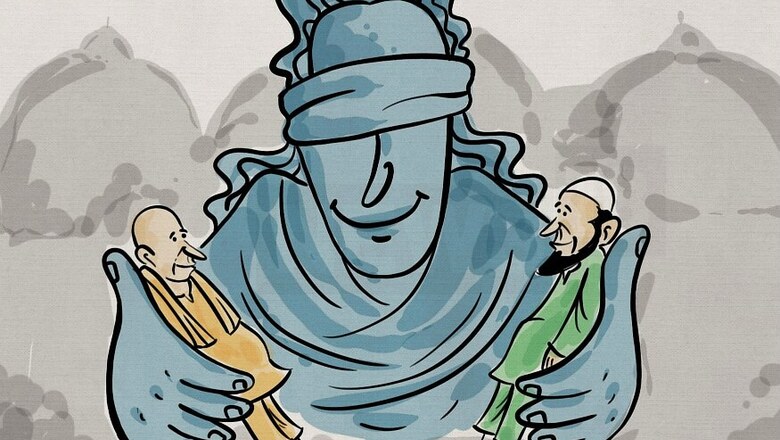
views
In an unanimous judgment, a five-judge Constitution bench of the Supreme Court Saturday allotted the dispute Ayodhya land to the Ramjanmabhoomi Trust. It ordered allotment of an alternative piece of five acres of land to the Muslims for a mosque.
The Bench, headed by Chief Justice of India Ranjan Gogoi, said the Hindu litigants were able to establish their case that they were in possession of the outer courtyard. It added that the Muslim side was unable to prove their exclusive possession of the inner courtyard.
The verdict comes after a 40-day hearing on a petition against the earlier 2010 Allahabad High Court judgment that had ordered that the land be divided equally between Nirmohi Akhara, representatives of 'Ram Lalla Virajman' and the Sunni Central Waqf Board.
Here are a few of the litigants in the title suit.
Ram Lalla Virajman
The baby Lord Ram, who is considered under Indian law to be a "juristic person" and is represented by his next human friend, Triloki Nath Pandey, a senior Vishwa Hindu Parishad, is among the litigants in the case. The deity first became a litigant in the case in 1989, two years after the title case was moved out of the civil court to the Allahabad High Court. At the time, Deoki Nandan Agarwal, a former judge of the Allahabad High Court, had filed a petition seeking to become the "sakha" or friend of the deity and its birthplace in the title suits. Agarwal had been serving as the VHP vice president at the time.
Nirmohi Akhara
A religious denomination of sadhu, the Nirmohi Akhara had originally laid claim to the mosque in 1959 ten years after the site had been closed off to Muslims and an idol of the Hindu deity Ram had been installed in the central dome. The group had at the time claimed that they had been worshiping the deities installed at a temple at the disputed site.
Sunni Central Waqf Board
The primary litigant from the Muslim side in the case, the Sunni Waqf Board had first filed a suit staking ownership of the site in 1961, in which it had claimed possession of the mosque.
Mohd Iqbal Ansari
An independent litigant and the son of one of the oldest litigants in the case (Mohammad Hashim Ansari), Iqbal Ansari took over as the petitioner following the death of his father in 2016. Hashim Ansari, a local tailor, had lived in proximity to the Babri Masjid and was one of the first petitioners in the case,
M Siddiq
A general secretary of the Jamiat-ul Ulema-i Hind Hind of Uttar Pradesh, M Siddiq had filed a petition on behalf of the organisation that became the title suit in the case,
Shia Central Board of Waqf
A trial court in 1946 had ruled the Babri Masjid as the Sunni property. The Board had, however, argued that the mosque hadn't been built by Babur — a Sunni — but his commander who had been a Shia. The Shia Waqf board, which had also been a party in the Allahabad High Court had petitioned the Supreme Court against the 1946 decree in a Special Leave Petition.



















Comments
0 comment